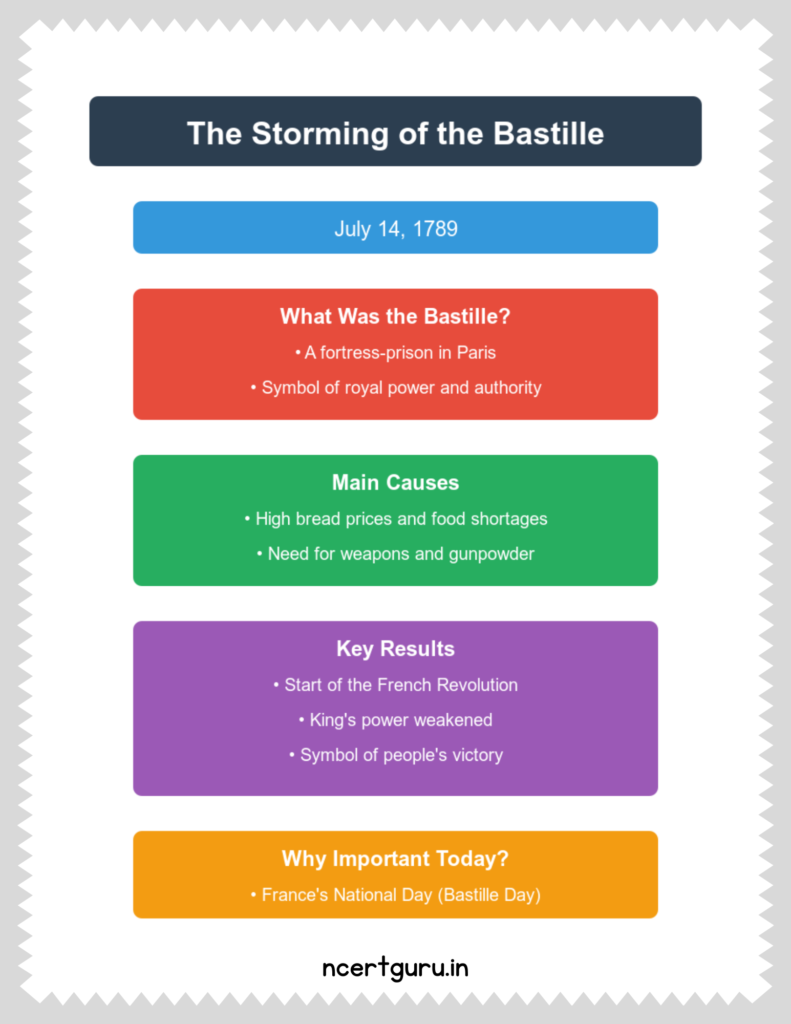The Storming of the Bastille on July 14, 1789, marked a crucial moment in the French Revolution. It marked a dramatic shift in the struggle for liberty, equality, and fraternity, and it remains a symbol of the people’s power to challenge tyranny. This event would become so significant that July 14 is now celebrated as Bastille Day, France’s national holiday.
What Started the Storming of the Bastille?
By 1789, France was in crisis. The country faced severe financial problems, food shortages, and widespread discontent with the monarchy. The Third Estate (commoners) had formed the National Assembly, demanding political reforms. Meanwhile, rumors spread that King Louis XVI was planning to use military force to suppress the growing unrest.
The Bastille, a fortress and prison in Paris, was seen as a symbol of royal authority and oppression. Although it held only seven prisoners at the time, it stored a large cache of weapons and gunpowder. On July 14, 1789, a crowd of revolutionaries stormed the Bastille, seeking to arm themselves and challenge the monarchy.
What Happened After the Storming of the Bastille?
The fall of the Bastille was a decisive victory for the revolutionaries. The governor of the Bastille, Bernard-René de Launay, was killed, and the fortress was dismantled. The event inspired uprisings across France and marked the beginning of the end for the monarchy.
The Storming of the Bastille demonstrated the power of the people. It led to the abolition of feudal privileges and the Declaration of the Rights of Man and of the Citizen, laying the foundation for modern democracy.
Symbols of the French Revolution: Bread, Guillotine, and the Bastille
- Bread: Bread was a staple food for the French people, and its scarcity symbolized the economic hardships faced by the commoners. The high cost of bread and widespread hunger fueled the revolution.
- Guillotine: The guillotine became a symbol of the Reign of Terror, a period during the revolution when thousands were executed, including King Louis XVI and Marie Antoinette. It represented both justice and excess.
- Bastille: The Bastille stood for royal tyranny and oppression. Its fall symbolized the triumph of the people over despotism and became a rallying cry for freedom.
| Aspect | Details |
| Date | July 14, 1789 |
| Location | Paris, France |
| Reason | – Symbol of royal tyranny – Search for weapons and gunpowder |
| Main Event | Revolutionaries stormed the Bastille, freed prisoners, seized weapons |
| Outcome | – Fall of the Bastille – Boosted revolutionary morale |
| Symbolism | – End of absolute monarchy – Power of the people |
| Aftermath | – Spread of revolts across France – Beginning of the French Revolution |

Want to dive deeper into the French Revolution? Explore our next blog, Causes of the French Revolution!

Pingback: 5 Causes of the French Revolution - NCERT guru